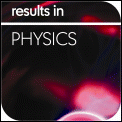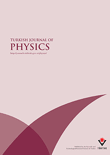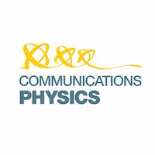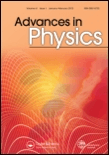
Results in Physics
Scope & Guideline
Shaping the Future of Physics Research
Introduction
Aims and Scopes
- Theoretical and Computational Physics:
The journal publishes papers that present theoretical frameworks, simulations, and computational models to explain physical systems and phenomena, often leveraging advanced mathematical techniques. - Experimental Physics and Materials Science:
Research articles that provide experimental data, methodologies, and analyses related to the properties and behaviors of materials under various conditions. This includes studies on nanomaterials, semiconductor physics, and metamaterials. - Applied Physics and Engineering:
Papers that explore practical applications of physics principles in engineering, technology, and materials science. This includes topics such as photonics, optoelectronics, and sensor technologies. - Interdisciplinary Research:
The journal encourages research that intersects with other scientific disciplines such as biology, chemistry, and environmental science, particularly studies that utilize physical principles to address complex problems. - Quantum Physics and Information:
Submissions that delve into quantum mechanics, quantum information theory, and their applications, including quantum computing and quantum optics.
Trending and Emerging
- Nanotechnology and Nanomaterials:
There is a growing interest in the properties and applications of nanomaterials, particularly their use in electronics, photonics, and energy storage, which reflects the rapid advancements in nanotechnology. - Quantum Computing and Quantum Information Science:
Research on quantum algorithms, quantum entanglement, and quantum communication is increasingly prevalent, highlighting the expanding field of quantum technologies. - Metamaterials and Plasmonics:
Studies focusing on the design and application of metamaterials for manipulating electromagnetic waves are gaining attention, particularly in the context of sensors and optical devices. - Interdisciplinary Applications of Physics:
Research that applies physics principles to solve problems in biology, medicine, and environmental science is on the rise, reflecting a trend towards interdisciplinary collaboration. - Fractional Calculus in Modeling:
The application of fractional calculus to model complex systems, particularly in epidemiology and dynamics, is emerging as a significant area of interest, indicating a methodological shift in modeling approaches.
Declining or Waning
- Classical Mechanics:
While classical mechanics remains foundational, the volume of research focusing solely on classical mechanics principles has decreased as more complex and interdisciplinary studies emerge. - Traditional Electromagnetism:
Research that does not incorporate advancements in nanotechnology or materials science within the realm of electromagnetism has become less prominent, as newer methodologies gain traction. - Static Theoretical Models:
The inclination towards dynamic, adaptive, and real-world applicable models has led to a decline in interest in static theoretical approaches that do not reflect current experimental capabilities. - Basic Optical Phenomena:
Research exclusively centered on basic optical phenomena without integrating advanced materials or applications in modern technologies is seeing a reduction in publication opportunities. - Simplistic Drug Interaction Studies:
Studies focusing solely on straightforward drug interactions without considering complex biological systems or advanced modeling techniques are becoming less common.
Similar Journals

JOURNAL OF THE KOREAN PHYSICAL SOCIETY
Advancing the Frontiers of Physics ResearchJOURNAL OF THE KOREAN PHYSICAL SOCIETY is a prominent academic journal dedicated to advancing the field of physics, published by the prestigious Korean Physical Society. With its extensive contribution to the scientific community since its inception in 1996, this journal serves as an essential platform for the dissemination of innovative research findings in various branches of physical science. Despite its current categorization in Q4 and a ranking reflecting its early-stage impact relative to peers, it remains a valuable resource for researchers, professionals, and students eager to explore developments in general physics and astronomy. The journal is accessible in both print and electronic formats, making it convenient for a global audience. Each issue aims to foster collaboration and knowledge-sharing within the field, ensuring that it remains relevant and instrumental in shaping future research directions. Located in South Korea, the journal continues to nurture a vibrant academic community, contributing to the ongoing dialogue in the global scientific arena.

Journal of Contemporary Physics-Armenian Academy of Sciences
Advancing the Frontiers of Physics and Astronomy.Journal of Contemporary Physics-Armenian Academy of Sciences is a distinguished publication dedicated to advancing the field of Physics and Astronomy. Published by PLEIADES PUBLISHING INC, this journal features cutting-edge research that addresses contemporary issues and developments within the realm of physics. With an ISSN of 1068-3372 and an E-ISSN of 1934-9378, the journal enjoys recognition within the academic community, currently holding a Q3 category quartile ranking in 2023, indicating its relevance and contribution to general physics and astronomy. Although the journal is not open access, it provides valuable insights and a platform for scholars and researchers to share their findings, thus promoting collaboration and innovation in the field. Based in the United States, at PLEIADES HOUSE, 7 W 54 ST, NEW YORK, NY 10019, the Journal of Contemporary Physics serves as a vital resource for researchers, professionals, and students aiming to stay informed about the latest scientific advancements and theoretical explorations.

Optoelectronics Letters
Bridging Research and Application in OptoelectronicsOptoelectronics Letters, published by Tianjin University of Technology, is an esteemed platform for the dissemination of innovative research within the fields of atomic and molecular physics, optics, condensed matter physics, and electrical engineering. With its inaugural publication in 2007 and a convergence period extending to 2024, this journal aims to foster scholarly communication and collaboration among researchers and professionals. Although currently lacking an impact factor, it serves a vital niche in the rapidly evolving field of optoelectronics, evidenced by its categorization in the fourth quartile for various physics disciplines and the third quartile in electrical and electronic engineering. Given its ranking dynamics in Scopus, it is an emerging choice for authors seeking to convey their findings on electronic, optical, and magnetic materials. Researchers, students, and industry professionals alike can benefit from its open access options, encouraging a broad dissemination of cutting-edge knowledge that is essential in the advancement of technology and materials science.

Frontiers of Physics
Fostering Collaboration for a Brighter Physics FutureFrontiers of Physics, published by Higher Education Press, is a premier open-access journal dedicated to fostering innovative research and excellence within the field of physics. With an ISSN of 2095-0462 and an E-ISSN of 2095-0470, this rapidly growing journal has established itself as a valuable platform for disseminating cutting-edge findings, covering a diverse range of topics from theoretical frameworks to experimental advancements. Notably, Frontiers of Physics has achieved an impressive Q1 ranking in the 2023 Scopus Quartiles for Physics and Astronomy, securing a competitive 5th out of 81 positions in its category, reflecting a high impact factor that underscores its importance to the scientific community. Since its inception in 2011 and continuing through 2024, the journal aims to bridge the gap between academia and industry, encouraging collaboration among researchers, professionals, and students alike. Its commitment to open access ensures that high-quality research is readily accessible, thereby promoting knowledge sharing and advancement in the global physics community. Explore the potential of your research in Frontiers of Physics, where the future of physics flourishes.

Turkish Journal of Physics
Connecting scholars with cutting-edge physics discoveries.Turkish Journal of Physics, established in 1994 and published by the Tubitak Scientific & Technological Research Council Turkey, is a prominent platform for the dissemination of innovative research in the field of physics and related areas. With an ISSN of 1300-0101 and an E-ISSN of 1303-6122, this journal has carved a niche in the academic community, evidenced by its ranking within the Q3 category in the 2023 evaluation of Physics and Astronomy. As it converges its published works toward the year 2024, researchers and scholars are encouraged to engage with its rich repertoire of studies that covers general physics and astronomy, currently holding a Scopus rank of #96 out of 243, placing it in the top 60th percentile. The Turkish Journal of Physics serves as a vital resource for advancing knowledge, fostering collaborative research, and providing insights into contemporary advancements in the discipline. While it operates under a subscription model, the quality and impact of its peer-reviewed articles make it an essential read for professionals and students alike, looking to stay informed on critical developments within the physics community.

Communications Physics
Illuminating the path of interdisciplinary collaboration.Communications Physics is a premier open access journal published by Nature Portfolio, dedicated to disseminating high-quality research in the field of Physics and Astronomy. Since its inception in 2018, the journal has rapidly established itself as a vital platform for innovative scientific communication, boasting an impressive Impact Factor and achieving Q1 status in the 2023 category of Physics and Astronomy (miscellaneous). With a Scopus rank of #31 out of 243, placing it within the 87th percentile, Communications Physics attracts a global audience of researchers, professionals, and students eager to engage with cutting-edge findings. The journal supports open access, ensuring that research is freely available to the public, which enhances its visibility and encourages broader discussions within the scientific community. Located in Berlin, Germany, Communications Physics aims to bridge the gap between various disciplines within physics, fostering interdisciplinary collaboration and inspiring future research endeavors.

ACTA PHYSICA SINICA
Empowering Researchers with Groundbreaking InsightsACTA PHYSICA SINICA is a prominent journal published by the Chinese Physical Society, dedicated to the dissemination of groundbreaking research in the field of physics and astronomy. Established in 1993, this journal has consistently contributed to the scientific community by publishing high-quality articles that cover a wide range of topics within general physics and related disciplines. Although currently classified in Q4 of the physics and astronomy category by Scopus, ACTA PHYSICA SINICA plays an important role in fostering collaboration and communication among researchers in China and around the world. With a substantial readership, this journal is poised to remain a valuable resource for professionals, researchers, and students alike. By providing in-depth analysis and insights, it aims to advance the understanding and application of physical principles in various technological and scientific advancements. The journal is accessible via subscription, ensuring that contributors and readers can engage with the evolving landscape of physics research. For more information, visit the publisher's website.

ACTA PHYSICA POLONICA A
Exploring Breakthroughs in General PhysicsACTA PHYSICA POLONICA A is a distinguished peer-reviewed journal published by the Polish Academy of Sciences Institute of Physics, offering a platform for disseminating cutting-edge research in the field of physics and astronomy. With an ISSN of 0587-4246 and an E-ISSN of 1898-794X, this journal has been a staple for scholars since its inception, converging its publication years from 1996 to 2024. Despite its current Q4 classification in the Physics and Astronomy (miscellaneous) category, ACTA PHYSICA POLONICA A provides valuable insights and breakthroughs addressing various aspects of general physics. Researchers, professionals, and students will find a wealth of knowledge within its pages, even as it operates in an evolving academic landscape. While subscription options exist, the journal aims to foster collaboration and knowledge exchange in the physics community, making it a vital resource for those seeking to stay at the forefront of research advancements.

ADVANCES IN PHYSICS
Advancing Understanding Through Rigorous Scientific Inquiry.ADVANCES IN PHYSICS, published by TAYLOR & FRANCIS LTD, is a prestigious journal that has been at the forefront of condensed matter physics since its inception in 1952. With an impressive impact factor, the journal holds a prominent place in the academic community, classified as Q1 in the 2023 category for Condensed Matter Physics, and it ranks first among 434 journals in this field, demonstrating its value and influence. This journal provides a platform for cutting-edge research, encompassing theoretical, computational, and experimental studies that push the boundaries of knowledge in physics. Its commitment to high-quality publications makes it essential reading for researchers, professionals, and students alike. Although it does not offer open access, ADVANCES IN PHYSICS remains a critical resource for those aiming to stay updated with significant developments in condensed matter physics, fostering innovation and collaboration across disciplines.

Frontiers in Physics
Connecting Ideas, Bridging Disciplines in PhysicsFrontiers in Physics is a prestigious peer-reviewed journal published by FRONTIERS MEDIA SA, dedicated to advancing the field of physics through innovative research and interdisciplinary approaches. Established as an Open Access journal in 2013, it has quickly become a vital resource for researchers, professionals, and students alike, with a shining presence in Scopus categories such as Biophysics, Materials Science, Mathematical Physics, and Physical Chemistry. With an impressive array of quartile rankings, including Q2 in several key areas, it positions itself firmly among leading journals in the field, reflecting its commitment to high-quality contributions. The journal's global reach and emphasis on collaborative research not only enhance its visibility in the scientific community but also facilitate a deeper understanding of complex physical phenomena. Researchers are encouraged to submit original works that push the boundaries of knowledge, making Frontiers in Physics an essential platform for the latest advancements in the discipline.